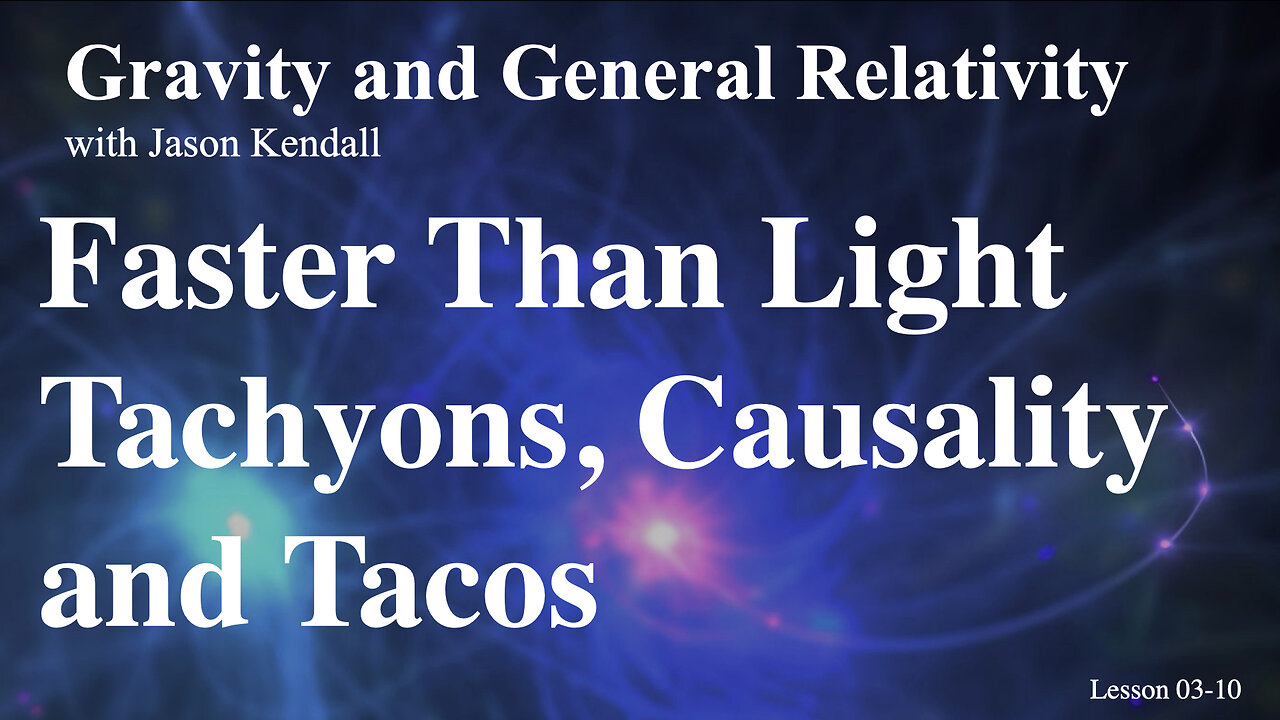Premium Only Content

Beyond Light Speed: The Truth About Faster-Than-Light Travel and Special Relativity
In the realm of theoretical physics, few concepts ignite the imagination quite like the idea of faster-than-light (FTL) travel. Popularized by science fiction, the notion suggests that humanity may one day traverse the cosmos at speeds exceeding that of light. However, the tenets of special relativity, formulated by Albert Einstein in the early 20th century, present formidable barriers to this tantalizing prospect. This essay explores the principles of special relativity, the implications of causality, and why FTL travel remains a pipe dream. Special relativity is anchored on two fundamental postulates: the laws of physics are invariant for all observers moving uniformly relative to one another, and the speed of light in a vacuum is constant and the same for all observers, regardless of their relative motion. These principles revolutionized our understanding of space and time, establishing that they are interwoven into a single continuum known as spacetime. This framework implies that no absolute rest exists; every observer experiences time and distance differently based on their relative velocity. An inertial frame of reference is one in which an observer is either at rest or moving with a constant velocity. All physical laws apply uniformly within these frames. For example, a person on a smoothly moving train perceives their surroundings as stationary, while an observer on a platform sees the train speeding by. This relativity of motion is a core aspect of special relativity. One of the most profound implications of special relativity is that the speed of light, approximately 299,792 kilometers per second, is the ultimate speed limit in the universe. Regardless of the observer’s motion, light will always be measured at this constant speed. This leads to counterintuitive conclusions about time and space, especially as objects approach light speed. Causality, the principle that every effect must have a preceding cause, is critical to the framework of physics. In the context of FTL travel, violations of causality can lead to paradoxes, such as the infamous grandfather paradox where an individual could potentially prevent their own existence by altering past events. If FTL travel were possible, it would enable communication or travel to the past, fundamentally undermining our understanding of cause and effect. For instance, if a message could be sent back in time, it could arrive before it was even sent, creating logical inconsistencies that challenge the very fabric of reality. As an object moves closer to the speed of light, two phenomena become significant: time dilation and length contraction. Time dilation refers to the effect whereby time appears to pass more slowly for an observer moving at high velocities compared to a stationary observer. Conversely, length contraction suggests that objects in motion are measured to be shorter along the direction of travel from the perspective of a stationary observer. Numerous experiments have corroborated the predictions of special relativity. For instance, particles known as muons, which are created in the upper atmosphere, have been observed to reach the Earth’s surface despite their short lifespan. This phenomenon can only be explained through the lens of time dilation, reinforcing the notion that time is not an absolute measure. Theoretical discussions of FTL often invoke tachyons, hypothetical particles that are presumed to travel faster than light. However, tachyons remain unobserved and their existence poses significant challenges to established physical laws, particularly regarding causality. If tachyons were to exist, their behavior would not only violate the principles of special relativity but also induce paradoxes akin to those discussed previously. In summary, while the allure of faster-than-light travel captures the imagination and fuels countless science fiction narratives, the laws of physics as we currently understand them render such possibilities unlikely, if not impossible. The principles of special relativity, particularly the invariance of the speed of light and the principle of causality, establish firm boundaries that prevent the realization of FTL travel. As we continue to explore the cosmos and the fundamental nature of reality, it is crucial to adhere to these principles, ensuring that our scientific endeavors remain grounded in empirical evidence and logical reasoning.
-
 DVR
DVR
Mally_Mouse
4 days agoFriend Friday!! 🎉 - Let's Play! - MIMESIS
5.13K2 -
 41:20
41:20
MattMorseTV
3 hours ago $0.19 earned🔴Schumer just BACKSTABBED his OWN VOTERS. 🔴
18.9K39 -
 3:33:34
3:33:34
MissesMaam
4 hours ago*Spicy* Friend Friday with Mally_Mouse!! 💚✨
2.71K3 -
 57:44
57:44
Candace Show Podcast
4 hours agoBen Shapiro Is Crying Again. | Candace Ep 261
43.2K175 -
 LIVE
LIVE
megimu32
3 hours agoOFF THE SUBJECT: MEMESIS w/ MALLY MOUSE | MISSES MAAM | SAVAGEJAYGATSBY
53 watching -
 LIVE
LIVE
a12cat34dog
3 hours agoI AM FINALLY BACK | Dying Light: The Beast x PUBG | COLLABORATION EVENT {18+}
53 watching -
 LIVE
LIVE
John_Goetz
3 hours agoJohn Gets Playing - Clair Obscur Expedition 33
4 watching -
 1:03:44
1:03:44
BonginoReport
5 hours agoNew Yorkers Are Movin' Out - Nightly Scroll w/ Hayley Caronia (Ep.173) - 11/06/2025
123K69 -
 1:21:57
1:21:57
Roseanne Barr
23 hours ago“Central Banking: The Hidden Empire” W/ Mel K | The Rosenne Barr Podcast #122
146K113 -
 1:19:42
1:19:42
Russell Brand
8 hours agoTHE LEFT’S NEW STAR — What Zohran Mamdani’s Victory Really Means - SF647
151K37